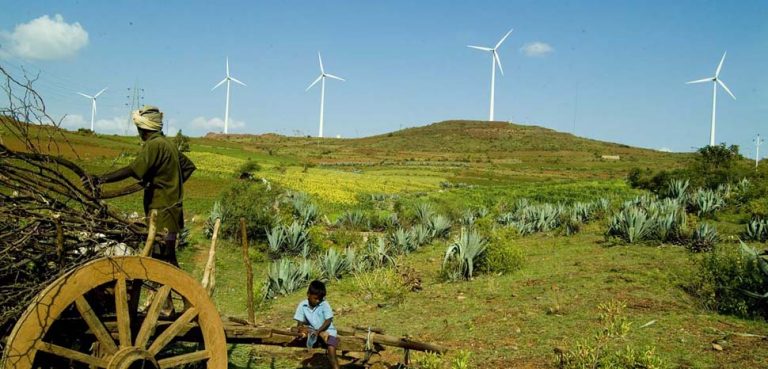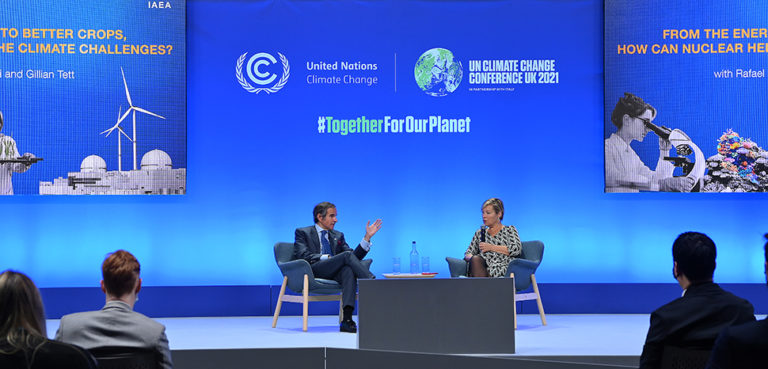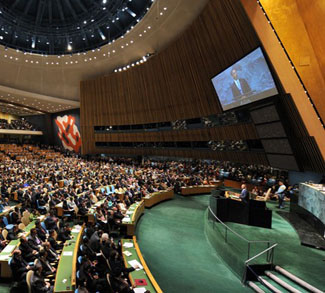Climate change places the world in the midst of a deep global transformation resulting from pandemics, rising temperatures, natural disasters, weather extremes, as well as food and water insecurity. The U.S. understands that Southeast Asia, and especially Vietnam, is one of the most vulnerable regions to this developing environmental emergency.
Under a welcoming springtime blue sky, John Kerry, Special Envoy for Climate met with Vietnamese President Nguyen Xuan Phuc in Hanoi. Kerry, a Vietnam veteran and former Secretary of State in the Obama administration, re-pledged America’s commitments to helping Vietnam achieve its net-zero emissions by 2050.
Vietnam needs little reminder that there’s an urgency to accelerate national efforts to limit warming to 1.5 degrees Celsius, and to strengthen efforts to adapt to the impacts of climate change. The country’s impressive accomplishments over the several decades in reducing poverty are in jeopardy of being derailed by these rising temperatures. The solutions will require fundamental transformations in energy development.
“President Biden is very committed to helping Vietnam in a big way to transition from coal to new technologies,” said Kerry at an event hosted by USAID in Hanoi.
The climate crisis is real and it requires urgent mobilization from nations and citizens, if there is to be a successful decoupling from the burning of coal, oil, gas, and forests. This shift to sustainable forms of renewable energy, clean transport, re-generative agriculture is the only actionable roadmap to move forward to sustain life. Everyone has a part to play.
Vietnam’s leadership does want to frame a new story about a cleaner future. No one denies that Vietnam’s fast-track economic growth over the past two decades arrived at the expense of the environment, leading to polluted waterways, extensive loss of wildlife, a sharp decline in biodiversity and a near collapse of fisheries.
The Communist Party has consistently pledged to balance ecological improvements as part of their march toward continued economic growth. At the 26th UN Climate Change Conference (COP26), Prime Minister Pham Minh Chinh underscored the critical need to address climate change since Vietnam remains one of the countries worst affected by increased severe weather patterns.
Chinh offered assurance that Vietnam will “make use of our own domestic resources, along with cooperation and support of the international community in order to achieve net-zero emissions.”
This shift towards a green, circular, low carbon development model necessitates some difficult decisions. Vietnam’s 8th Power Development Plan (PDP8) proposes a shift away from coal-power energy and an urgent move towards renewables. Unfortunately, Vietnam’s National Load Dispatch Center (NLDC) revealed that it couldn’t approve any solar or wind energy facilities in 2022 since grid constraint does not allow for any additional wind and power capacity.
This situation only accentuates the need for America’s support to expand and strengthen Vietnam’s potential to become recognized as an ASEAN leader in wind capacity and renewable energy. The nation’s wind resources and accelerated power demand position it to lead the green transition in Southeast Asia.
The country already has the most ambitious ASEAN wind power development plan with a projected target of 11,800 megawatts (MW) by 2036. Vietnam can experience an increase in offshore wind power capacity to 5-19 gigawatts (GW) from 1 GW, according to the World Bank Offshore Wind Roadmap.
The Mekong Delta is a region that can benefit from such wind powered energy and that has been most threatened by climate change. The delta has a coastline and islands with a length of about 434 miles. Soc Trang province holds much promise for wind power development with a coastline of 44 miles and steady strong winds. The government has approved 20 wind power projects for this year and 2023.
The timing corresponds with the continuing U.S. climate change commitments in the region. The United States Agency for International Development (USAID) with a budget of up to $2.9 million has announced a three-year project aimed to protect key coastal habits in the Mekong Delta to increase sustainability of fisheries, enhance climate change adaptation, and improve biodiversity.
Furthermore, the USAID’s clean energy interventions with a former enemy, now comprehensive partner, include assistance in encouraging policy development measures to increase investments in the clean energy sector and to easing process of investing in renewable energy.
Hanoi’s political leadership recognizes that Washington can increase its financial and technical assistance to help the nation meet climate change challenges and support its renewable energy developments. To address any climate change headwinds, Vietnam’s Green Growth Strategy (VGGS) has set targets to achieve low emissions development and help the national efforts to mitigate climate change.
USAID continues to play a supporting role in Asia’s Low Emission Development Strategies (LEDS) Partnership, which provides training, knowledge sharing, and cooperation to more effective use of LEDS tools and practices in development decision-making and financing. This voluntary regional network advances country-led and specific strategic plans to promote economic growth while reducing GHG emissions without causing trade-offs to other environmental pressures in the region.
There’s increasing confidence from Washington that Vietnam’s leadership will meet the climate change crisis. The country’s National Green Growth Strategy for 2021-2030, with a vision toward 2050, reflects a goal and strategy to accomplish green growth that will enable all citizens to participate in economic prosperity and to enjoy a sustainable environment.
The government’s optimum plan calls for reduction in greenhouse emissions per GDP by at least 15 percent by 2030. In order to reach this goal, it necessitates abandoning new coal-fired plants, switching where possible to natural gas, and embracing efficiency for the remaining coal power plants.
Hanoi knows that the nation has relied to heavily on fossil fuels and overexploitation of natural resources to meet its development needs, but now with sea level rise washing away its coastline, it has no choice but to transform its economy toward a more sustainable growth model.
The views expressed in this article belong to the authors alone and do not necessarily reflect those of Geopoliticalmonitor.com




